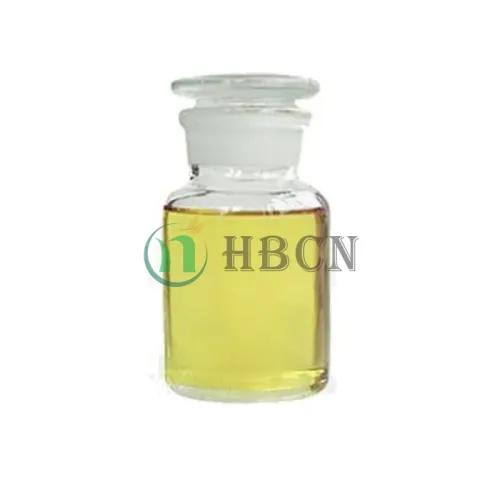
Dec . 28, 2024 19:53 Back to list
abamectin 95 tc msds service
Understanding Abamectin 95% TC Safety Data and Handling
Abamectin is a widely used pesticide in agriculture, renowned for its efficacy against a range of pests including mites, nematodes, and insects. It is derived from the fermentation products of the bacterium *Streptomyces avermitilis*. In its concentrated form, known as Abamectin 95% TC (Technical Concentrate), it plays a crucial role in integrated pest management strategies for various crops. In this article, we will examine the safety data, handling procedures, and regulatory considerations associated with Abamectin 95% TC.
Chemical Properties and Uses
Abamectin is a mixture of two macrocyclic lactones, avermectin B1a and B1b. Its high potency and low toxicity to mammals make it preferable for use in agriculture. Typically, Abamectin is applied in diluted forms as it works effectively at low concentrations. It interferes with the nervous system of target pests, leading to paralysis and eventual death. This mechanism of action retains effectiveness against a wide variety of pests, making it an integral part of pest control programs.
Safety Data Sheet (SDS) Overview
The Safety Data Sheet (SDS) for Abamectin 95% TC contains vital information regarding its safe handling and potential hazards. Here are some key points outlined in the SDS
1. Hazard Identification Abamectin is classified as harmful if ingested, inhaled, or absorbed through the skin. It may cause irritation to the eyes and skin upon contact. Users are advised to avoid exposure and to use appropriate personal protective equipment (PPE), such as gloves, goggles, and masks.
2. Storage and Transport Abamectin should be stored in a cool, dry place, away from heat sources and incompatible substances. It must be kept out of reach of children and animals. During transport, the product should be packaged securely to prevent leaks and spillage.
3. Environmental Precautions As an ecological consideration, Abamectin can be toxic to aquatic life. Thus, it’s crucial to prevent its release into waterways. Users must follow all local regulations regarding pesticide applications to minimize environmental impact.
abamectin 95 tc msds service

Handling and Application Guidelines
The application of Abamectin must adhere to specific guidelines to ensure safety and effectiveness
- Preparation When mixing or applying Abamectin, it is essential to wear protective clothing. Always read the label instructions thoroughly before handling the product.
- Application Methods Abamectin can be applied using various methods, including foliar sprays, soil drenches, or injection systems, depending on the target pest and crop type. Proper calibration of application equipment is necessary to achieve the recommended application rate.
- Post-Application Safety After applying Abamectin, users should wash thoroughly and change out of contaminated clothing. It is advisable to keep people and animals away from treated areas for a designated period, as specified on the product label.
Regulatory Compliance
Regulatory bodies in many countries oversee the use of agricultural chemicals, and Abamectin is no exception. Farmers and applicators must ensure compliance with local, state, and federal regulations regarding pesticide use. This includes adhering to labeling requirements, reporting usage, and following best management practices to mitigate any risks associated with its application.
Conclusion
In summary, Abamectin 95% TC is a potent tool in agricultural pest management, offering a viable solution for farmers seeking to protect their crops. However, understanding its safety data, proper handling and application procedures, and regulatory compliance is crucial to maximize its benefits while ensuring safety for users and the environment. By following the guidelines set forth in the SDS, stakeholders can contribute to effective pest control and sustainable agricultural practices.
-
Dicamba Herbicide for Creeping Charlie – Effective & Selective Weed Control Solution
NewsJun.10,2025
-
Premium Penthiopyrad Fungicide for Effective Crop Protection Compare with Carbendazim & Copper Fungicides
NewsJun.10,2025
-
Top Products Containing Bifenthrin Effective Insecticide Solutions
NewsJun.10,2025
-
Powerful Lambda Cyhalothrin & Emamectin Benzoate Insecticide
NewsJun.10,2025
-
Emamectin Benzoate 5% Wholesale Supplier - Premium Quality
NewsJun.10,2025
-
Indoxacarb PubChem Key Pesticide Properties & Benefits
NewsJun.09,2025
